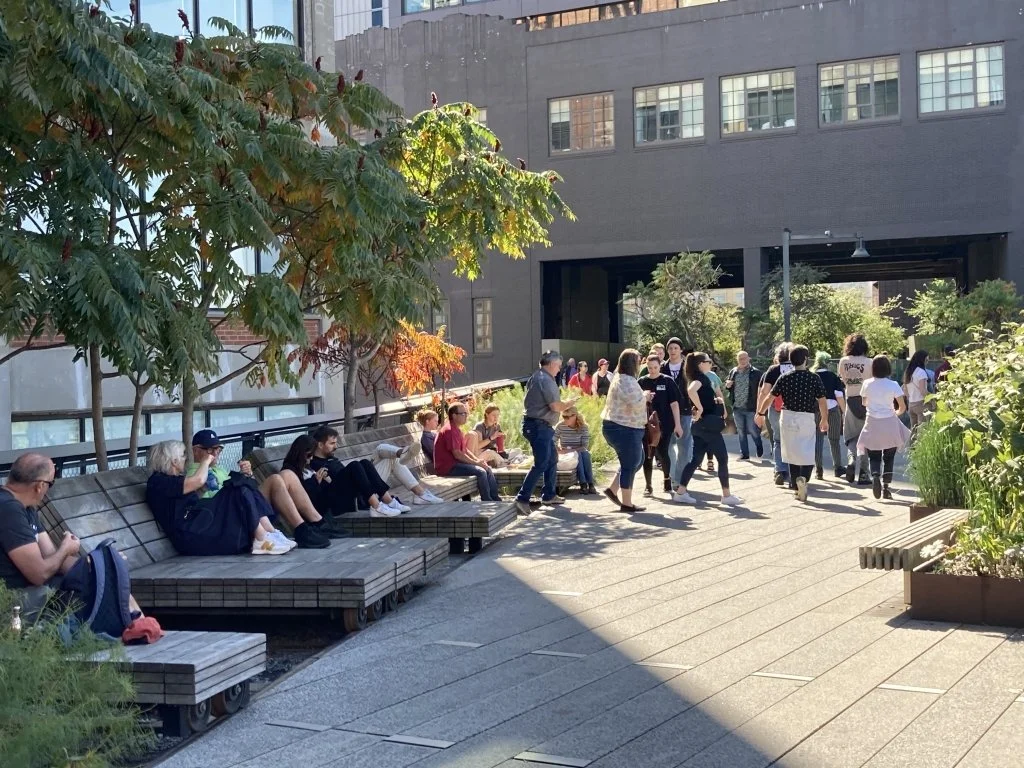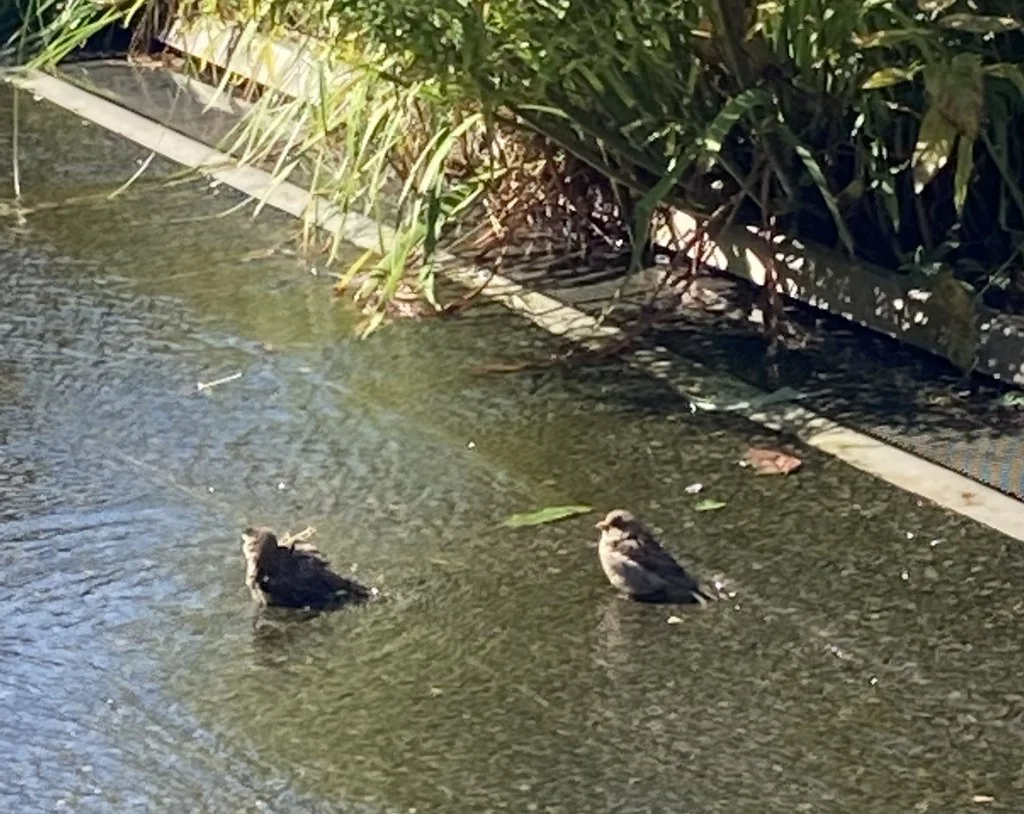Learning from New York City’s High Line
By Camilla Ween, Member of the Open Spaces Committee
A long-awaited visit to this acclaimed urban park, created from a disused railway line, proved both a delight and a source of inspiration.
Visiting New York’s High Line
View of a section of The High Line.
Last year I was being pressured by colleagues to attend a conference in Canada (I am a member of its steering group). I felt uncomfortable about the carbon footprint of the flight so said I would only go by boat and train. Quick research revealed that it would take over two weeks, would be very expensive and furthermore, the carbon footprint was worse than flying.
So that was a moment to reflect – that not all ‘alternative’ travel is necessarily better!
While umm-ing and ahh-ing about this, a colleague suggested that I could possibly justify the trip if I used it to accomplish something else. For long I have been wanting to see the New York City High Line project (as I often cite it as a brilliant example of repurposing old infrastructure) so I routed my return via New York.
What is The High Line?
A place to stroll - or to relax.
The High Line is a 1 ½ mile long park created on top of a disused railway line. It is beautifully and simply designed, with contemporary planting, forming a long stroll from end to end as well as oases to dwell in. It can be accessed at many points along the route so serves local communities as well.
The design themes are simple; surfaces and benches vary within the theme along the whole length. People walk the whole length or come to have their lunch or just to contemplate; though busy with visitors it is easy to find a spot to zone out, which I did.
Detail of some hard and soft landscaping.
Water and Wildlife
The High Line - not just for humans.
I sat down in front of an innocuous wet patch and before I knew it, sparrows were bathing in the shallow water at my feet. This was an intentional pond, but only about a centimetre deep. It was delightful, the water moved, the birds and bees enjoyed it and the ripples reflected the sun as a thousand stars.
The Takeaway
Shallow water and grasses.
My learning moment was thinking about Battersea and how it would be so nice to somehow make reference to our rivers which run in pipes under our feet. The argument is always either there is not enough space or it would be dangerous. Shallow water courses could be our answer.
As we, in the Open Spaces Committee, have been thinking about how to connect the many parks and parklets that we have in Battersea, I wonder if some of these simple design features could not be part of the answer.





